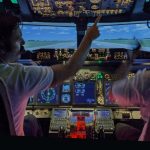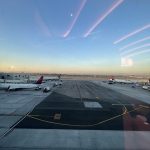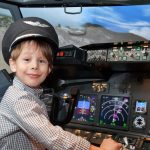Unleashing The Skyward Journey: Flight Experiments For Grade 6 – Ignite Curiosity And Soar To New Heights!
Flight Experiments for Grade 6
Introduction
Dear Readers,
2 Picture Gallery: Unleashing The Skyward Journey: Flight Experiments For Grade 6 – Ignite Curiosity And Soar To New Heights!


Welcome to our article on flight experiments for grade 6. In this guide, we will explore various flight experiments that are suitable for sixth-grade students. By engaging in these experiments, students will not only gain a better understanding of the principles of flight but also develop their scientific inquiry skills. So, let’s dive in and discover the exciting world of flight experiments!
What are Flight Experiments?

Image Source: onthemarkpress.com
Flight experiments are hands-on activities that allow students to explore and understand the concepts related to flight. Through these experiments, students can learn about the forces of flight, the principles of aerodynamics, and how different variables affect the performance of flying objects.
Who Can Participate in Flight Experiments?
Flight experiments are designed for grade 6 students, but they can also be adapted for other grade levels. These experiments are suitable for both individual students and group activities, allowing for collaborative learning and problem-solving.
When Should Flight Experiments be Conducted?
Flight experiments can be conducted throughout the school year, as they can be integrated into the science curriculum. Teachers can plan these activities during specific units on aerodynamics or as part of a broader project-based learning approach.
Where Should Flight Experiments Take Place?

Image Source: ytimg.com
Flight experiments can be conducted in classrooms, science labs, or even outdoors, depending on the nature of the experiments. It is essential to have a safe and open space for students to carry out these experiments without any potential hazards.
Why are Flight Experiments Beneficial for Grade 6 Students?
Flight experiments offer various benefits for grade 6 students. Firstly, they provide hands-on learning experiences that promote critical thinking and problem-solving skills. By engaging in these experiments, students can apply scientific principles in a practical context, fostering a deeper understanding of the subject matter. Additionally, flight experiments encourage creativity and innovation, as students can design and test their own flying objects.
How to Conduct Flight Experiments?
Conducting flight experiments requires careful planning and organization. Here are some steps to guide you:
Choose an experiment: Select an experiment that aligns with your learning objectives and curriculum.
Gather materials: Prepare all the necessary materials and equipment for the experiment.
Follow instructions: Read and understand the experiment instructions thoroughly before conducting the experiment.
Record observations: Encourage students to record their observations, measurements, and any unexpected outcomes.
Analyze results: Help students analyze their results and draw conclusions based on their observations.
Discuss findings: Facilitate a class discussion to share and compare the findings of different groups or individuals.
Reflect and assess: Engage students in reflecting on their learning experiences and assessing their understanding of the concepts explored.
Advantages and Disadvantages of Flight Experiments for Grade 6
Flight experiments have both advantages and disadvantages. Let’s take a closer look:
Advantages
1. Hands-on learning: Flight experiments provide students with practical experiences that enhance their understanding of scientific principles.
2. Critical thinking skills: These experiments encourage students to think critically, analyze data, and make connections between theory and practice.
3. Collaboration: Flight experiments can be conducted in groups, promoting teamwork and cooperation among students.
4. Creativity and innovation: Students can design and test their own flying objects, fostering their creativity and innovation.
5. Application of knowledge: Flight experiments allow students to apply the knowledge they have learned in the classroom to real-world scenarios.
Disadvantages
1. Resource limitations: Conducting flight experiments may require specific materials and equipment, which may not be readily available in all schools.
2. Safety concerns: Some flight experiments involve objects that may pose a risk if not handled properly. Teachers should ensure proper safety measures are in place.
3. Time-consuming: Planning and conducting flight experiments may require significant time and preparation.
4. Variable outcomes: Flight experiments can yield different results based on various factors, which may lead to inconsistent outcomes.
5. Limited scalability: Flight experiments may not be easily scalable for larger classrooms or schools with limited resources.
Frequently Asked Questions (FAQ)
1. Q: Are flight experiments only suitable for grade 6 students?
A: Flight experiments can be adapted for different grade levels, but the complexity and depth of the experiments may vary.
2. Q: Can flight experiments be conducted at home?
A: Yes, with proper supervision and guidance, flight experiments can be conducted at home as well.
3. Q: How can flight experiments be integrated into the curriculum?
A: Flight experiments can be integrated into science lessons, particularly those focusing on aerodynamics and physics.
4. Q: Do flight experiments require specialized equipment?
A: Some flight experiments may require specific materials and equipment, but many experiments can be conducted using everyday objects.
5. Q: What are the career opportunities related to flight experiments?
A: Flight experiments can spark an interest in aerospace engineering, aviation, and other STEM-related careers.
Conclusion
Dear Readers, we hope this article has provided you with valuable insights into flight experiments for grade 6. These experiments offer an engaging and interactive way for students to explore the principles of flight and develop their scientific inquiry skills. By conducting flight experiments, students can foster critical thinking, collaboration, and creativity. So, why wait? Let your imagination take flight and embark on this exciting learning journey with your students!
Final Remarks
Flight experiments for grade 6 are an excellent way to introduce students to the fascinating world of flight and aerodynamics. However, it is crucial to ensure proper supervision and safety measures are in place when conducting these experiments. Additionally, teachers should adapt the experiments to suit the resources and capabilities of their classrooms. By doing so, students can have a rewarding and enlightening experience as they explore the wonders of flight. Happy experimenting!
This post topic: Air Travel Tips


